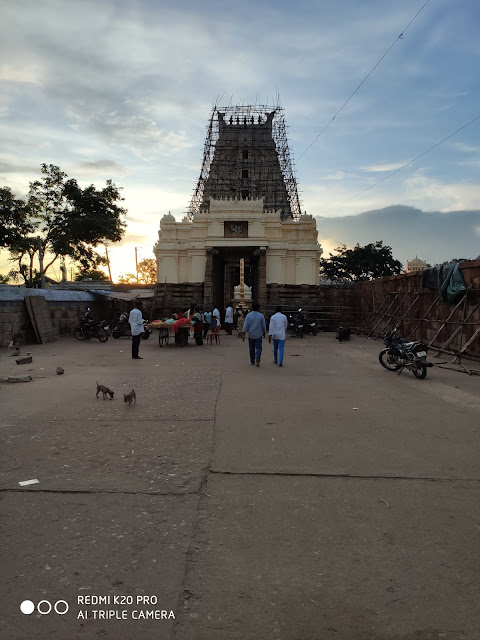The temple surrounded by three prakarams in the Lower Ahobilam is dedicated to Prahlada Varadar. With Vijayanagar style noticeable in the structure, there are a number of mandapas outside the temple. A shrine dedicated to Sri Venkateswara exists to the south west of this Narasimha temple and lends view to the episode that Lord Venkateswara obtained the blessings of Narasimha just before his marriage with Padmavathi. The Mukha Mandapam there, is now used as the Kalyana Mandapam of Narasimha Swamy. With Lakshminarasimha as the presiding Deity, the main temple consists of a sanctum, Mukhamandapam and Rangamandapam with numerous pillars intricately carved and carrying rich sculptures. There are also three smaller shrines for Lakshmi, Andal and Azhwars. In the sanctum are also kept the Utsava idols of Prahlada Varadar, Pavana Narasimhar and the processional idols of Jwala Narasimha endowed with ten hands and with his consorts Sridevi and Bhudevi flanking him. A small idol of the first Jeeyar, Sri Adivan Satakopa Swami is also kept in the sanctum. Both at Upper and Lower Ahobilam, one can see on the pillars sculptures of Lord Narasimhar wooing His consort Chenchulakshmi. The Lord chasing Hiranyakasipu in one pillar and bursting forth from another pillar to tear him are very realistic.There is a tall Jayasthambham erected in the spacious ground outside the temple walls to mark the victory of Krishnadeva Raya. The Kakatiya Kings especially Prathapa Rudra has also contributed towards additional structures and maintenance of this Ahobilam complex.
 |
| The Jayasthambam |
 |
| The Entrance Gopuram |
 |
| The newly erected Ramanujar Mandapam |
 |
| The holy water tank or teertham |
 |
| The gold plated Dwaja Sthambam |
 |
| An 80 year old man stands smeared in silver paint. He has been doing this for the past 15 years to earn his daily bread |
 |
| The well illuminated pillared mandapam looks so magical |





No comments:
Post a Comment